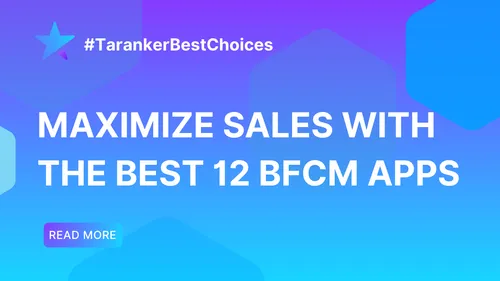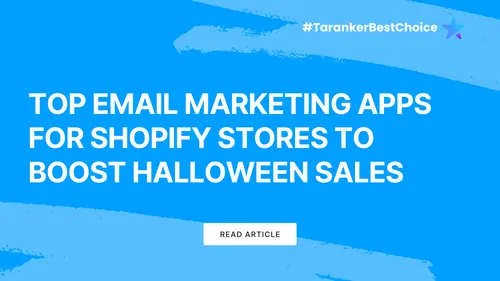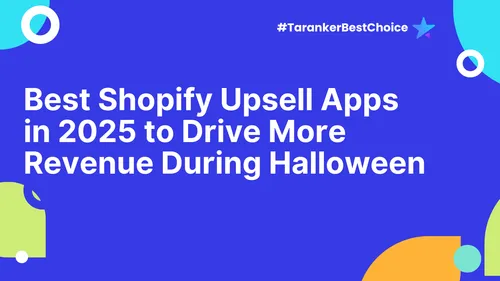Pricing is a central factor in determining the success of any ecommerce business. One of the most powerful tools to drive profitability is dynamic pricing, a strategy where prices fluctuate based on market demand, competition, and consumer behavior. According to McKinsey & Company, companies that optimize pricing can boost profitability by up to 25%. Ecommerce giants like Amazon, Airbnb, and Uber have mastered dynamic pricing, adjusting prices in real-time to reflect demand and maximize revenue.
While dynamic pricing offers many advantages, it also has its challenges, especially in maintaining customer satisfaction. 44% of customers report frustration when faced with fluctuating prices, as they may feel prices are unpredictable or unfair. Therefore, implementing dynamic pricing effectively requires careful attention to customer behavior, clear communication, and transparency.
In this blog, we will explore how dynamic pricing works, its benefits, the risks it poses to customer trust, and best practices for implementing it in your ecommerce store.

1. The Benefits of Dynamic Pricing for Ecommerce
Dynamic pricing can bring significant advantages to your business. Here’s how:
1.1. Maximizing Profit During High-Demand Periods
Dynamic pricing allows you to adjust prices during high-demand periods, such as holidays, product launches, or flash sales. When demand increases, prices can be raised accordingly to maximize revenue. This ensures you capitalize on moments when customers are willing to pay a premium for your products. For example, a clothing store might raise the price of a popular jacket during the winter season to reflect higher demand.
1.2. Staying Competitive
Dynamic pricing helps you stay competitive by responding quickly to changes in the market. For instance, if a competitor lowers their prices, you can adjust yours accordingly. This allows you to offer attractive prices without sacrificing profitability. In competitive industries like electronics or travel, dynamic pricing helps businesses adapt and maintain a competitive edge in real time.
1.3. Personalization Opportunities
Dynamic pricing also offers the ability to personalize pricing based on customer behavior, such as browsing history or purchase frequency. For instance, you could offer discounts or special rates for frequent customers or specific demographic segments. This personalization helps increase conversions by offering prices tailored to each customer’s behavior, which can ultimately boost customer loyalty and sales.
2. The Risks of Dynamic Pricing: Why It Can Alienate Customers
Despite the clear benefits of dynamic pricing, it also comes with its fair share of risks. Implementing dynamic pricing without thoughtful planning can lead to customer frustration, loss of trust, and a negative brand image. Let’s take a closer look at why dynamic pricing can sometimes alienate customers.
2.1. Customer Frustration with Fluctuating Prices
Dynamic pricing often means that customers may see prices changing from one visit to the next. This constant fluctuation can cause frustration, especially when customers feel they are being charged unfairly. If they make a purchase, only to see the price drop shortly afterward, they may feel as though they were overcharged. This situation can lead to negative experiences, and potentially, a loss of future business.
For example, during flash sales or seasonal price changes, a customer might purchase an item, only to discover hours later that the same product is now at a lower price. This inconsistency can cause a sense of betrayal, making customers feel that they’re not getting a fair deal.
2.2. Loss of Trust
Trust is the foundation of long-term customer relationships, and dynamic pricing can sometimes undermine it. Customers expect fairness and transparency when making purchasing decisions. If they notice that prices seem to change arbitrarily or without any clear reason, they may begin to question the integrity of your pricing strategy. When trust is lost, it’s difficult to rebuild, and the customer may choose to take their business elsewhere.
For instance, if a customer finds out that prices vary based on browsing history or geographical location without clear communication, they might feel that they are being treated unfairly, leading to a loss of loyalty. Without clear explanations or consistent pricing, customers can become skeptical of the entire pricing system.

2.3. Perception of Unfairness During High-Demand Periods
During high-demand periods, such as holidays, special promotions, or limited-time offers, customers may view price increases as exploitative. If they feel that businesses are taking advantage of their willingness to purchase during peak demand, this can leave a sour taste. This perception of price gouging can cause customers to boycott your store or post negative reviews, which can harm your overall brand reputation.
For example, during Black Friday or Cyber Monday, when prices of many products are traditionally lower, customers may feel disappointed or frustrated if the prices rise quickly due to high demand. This makes them feel as if they are paying more than others, causing potential harm to customer loyalty.
2.4. Unclear or Inconsistent Price Communication
Customers can also feel confused or dissatisfied when businesses fail to communicate the reasoning behind price fluctuations. If price changes happen without clear, upfront explanations, customers may feel left in the dark. It's essential to provide context when using dynamic pricing, explaining why prices fluctuate based on factors such as supply and demand, seasonal trends, or competitor pricing. Without this transparency, customers are left wondering why prices are constantly changing, which can lead to skepticism and dissatisfaction.
For instance, if a customer sees that the price of a product increases dramatically, but there’s no clear communication of why (like changes in demand or market conditions), they are more likely to be upset. A simple message such as "Prices fluctuate due to high demand" or “This price is based on stock availability” can help mitigate confusion and make dynamic pricing feel more justified.
Example: Confusion and Negative Reactions
Imagine a customer purchasing a product on a retailer’s website for $100, only to see the price drop to $80 the very next day. Naturally, they may feel as though they paid more than they should have, leading to frustration. If the price drop happens during a flash sale or holiday discount, customers may feel they are being tricked into paying higher prices than others.
A real-world example is how many electronics retailers have experienced backlash during peak sale seasons. As prices change drastically within a short time frame, customers often voice their displeasure on social media, damaging the brand’s reputation. These kinds of negative reactions can be seen in reviews and public forums, leading to long-term damage to your brand.

3. Best Practices to Implement Dynamic Pricing Without Alienating Customers
Implementing dynamic pricing doesn’t have to come at the expense of customer trust. With the right strategies in place, you can optimize your revenue while maintaining a loyal customer base. Below are some of the best practices to follow when implementing dynamic pricing.
3.1. Set Clear Pricing Guidelines
Setting clear pricing guidelines is the first step toward ensuring your customers understand why prices change. When using dynamic pricing, it’s crucial to define the rules for when and why prices will fluctuate. For instance, you might increase prices during high-demand seasons like the holidays or special product launches, or decrease them during off-peak periods to encourage sales. Be transparent with customers and communicate this clearly across your website or product pages.
Example: If you sell electronics and prices change based on demand, let your customers know in advance. A note saying, “Prices may vary based on market demand,” or “Prices will fluctuate during seasonal sales events” can prepare them for price shifts. This approach ensures customers don’t feel blindsided or confused by fluctuating prices.
By doing this, you allow your customers to understand that prices are not being changed arbitrarily but are driven by external factors, creating a sense of transparency and fairness.
3.2. Use Price Caps to Avoid Extreme Fluctuations
One of the biggest concerns with dynamic pricing is that prices can fluctuate too drastically. While this can optimize profits, it might also frustrate customers if they see wild swings in product prices. Price caps are an effective way to prevent extreme fluctuations.
Example: If a popular product’s price can increase by 50% during peak demand periods, this might feel excessive to some customers. Instead, set a reasonable cap—for example, a 10-15% price increase. This allows you to benefit from demand surges without risking alienating customers who are sensitive to large price hikes.
Implementing these price limits ensures that customers don’t feel taken advantage of, and helps preserve their trust while still benefiting from dynamic pricing.
3.3. Communicate Pricing Changes Clearly
To mitigate customer frustration with dynamic pricing, clear communication is paramount. Ensure that customers are informed when prices change, why they change, and when they might return to previous levels. This builds transparency and trust in your pricing model.
Example: If a product goes on sale, a simple message on the product page, such as “Due to high demand, prices have increased slightly, but we are offering a limited-time promotion to bring the price back down,” can help alleviate any confusion.
Providing detailed explanations for price changes through email updates, pop-ups on product pages, or social media announcements makes the entire process feel more transparent and customer-centric.
3.4. Provide Price Alerts and Notifications
For customers who might be hesitant to purchase because they’re unsure if prices will drop, offering price alerts can go a long way in reducing hesitation and frustration. Allow customers to sign up for notifications when the price drops, or if there is a limited-time offer.
Example: You could create a system where customers can opt-in to receive an email or text notification when a product’s price changes, particularly if it drops during off-peak seasons. This makes customers feel that they are not missing out, and gives them an incentive to act when the price is right.
By implementing a price alert system, you turn dynamic pricing into an opportunity to engage customers, rather than frustrating them with unexpected price shifts.

4. Use Technology and Tools to Automate Dynamic Pricing
Dynamic pricing requires real-time data and continuous adjustments, which can be overwhelming without the right tools. Investing in pricing automation software can make this process much easier and more efficient.
4.1. Pricing Software and Automation Tools
Dynamic pricing requires sophisticated tools that can automatically adjust prices based on demand, competition, and other factors. Investing in pricing software like Prisync, Pricefx, or Shopify’s Dynamic Pricing can help you automate price adjustments while analyzing the market in real-time. These tools track competitor prices, monitor stock levels, and adjust prices instantly based on the set parameters.
Example: With Prisync, you can track competitor prices automatically and adjust your prices to stay competitive, without having to manually check prices every hour. This keeps your business nimble and responsive to the market, ensuring you don’t miss out on potential sales.
Automated pricing systems take the burden off your shoulders, reduce the chances of human error, and keep your prices competitive, all while saving time.
4.2. Real-Time Data for Instant Price Adjustments
One of the most powerful features of dynamic pricing is the ability to adjust prices in real time. The technology behind these tools provides you with up-to-the-minute data on market demand, inventory levels, and competitor actions. This allows you to quickly adapt and maximize profitability based on changing circumstances.
For instance, if a product is running low in stock and demand is high, real-time data can prompt an automatic price increase to capitalize on the opportunity before your stock runs out. Similarly, if competitors drop their prices or offer promotions, dynamic pricing tools can lower your prices automatically to maintain competitiveness.
Having access to real-time data ensures that you never miss a chance to optimize your pricing, helping your business stay profitable in a fast-paced ecommerce market.
5. Monitor Customer Feedback and Adapt Your Strategy
Once dynamic pricing is implemented, it’s essential to monitor customer reactions closely. Customer feedback, whether through surveys, reviews, or direct communication, will provide valuable insights into how your dynamic pricing strategy is being received.
-
Sentiment analysis: Track customer sentiment on social media and your website to gauge reactions to fluctuating prices.
-
A/B testing: Test different dynamic pricing strategies to determine which model works best for your audience. Experiment with varying levels of price adjustments, discounts, or seasonal changes to see how they affect customer satisfaction.
6. Real-Life Examples of Successful Dynamic Pricing
6.1. Airlines and Travel Industry
Airlines are masters of dynamic pricing, adjusting flight prices based on booking time, demand, and availability. During peak seasons or special events, airlines can raise prices to take advantage of increased demand. However, during off-peak times, prices are reduced to attract more customers.
6.2. Amazon’s Dynamic Pricing Algorithm
Amazon is one of the biggest users of dynamic pricing, adjusting prices on millions of products every minute based on competitor pricing, customer demand, and market conditions. Amazon’s ability to adjust prices in real-time ensures that they remain the most competitive option in a fast-moving market.
Conclusion:
Dynamic pricing is an effective strategy to increase profitability and stay competitive in an ever-changing ecommerce landscape. However, to implement it successfully, businesses must ensure they remain transparent, maintain trust, and communicate effectively with their customers.
By following best practices—such as setting clear pricing guidelines, using price caps, and utilizing automation tools—you can implement dynamic pricing without alienating customers. Monitoring feedback, adjusting your strategy based on insights, and remaining transparent will help you build long-term customer loyalty while maximizing your profits.
Implementing dynamic pricing thoughtfully can position your business for long-term success and growth in a highly competitive market.













